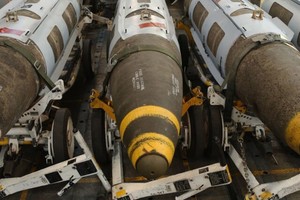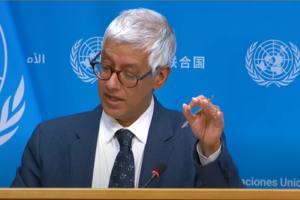When the 1960’s Come Back Around Again

Mark Twain is said to have said that, “History doesn’t repeat itself, but it rhymes.” But just because the quote may be apocryphal doesn’t mean that it isn’t true.
As the debate in this country over the war in the Middle East has taken over the nation’s college campuses, it’s becoming clear that Gaza has now become one of President Joe Biden’s most daunting political challenges in the middle of a re-election campaign where he was already facing more obstacles than he wants or needs. And as the protests spread and the divisions deepen, Democratic ghosts from the past are beginning to reemerge.
A party that’s at war with itself is almost always at a disadvantage, and internal Democratic discord over climate change, voting reform, immigration and now Gaza has created fundamental problems between Biden and the party’s progressive base. The parallels between another embattled Democratic president facing a seemingly unwinnable war were already being drawn, and the comparisons between Biden’s difficulties in the Middle East and Lyndon Johnson’s quagmire in Vietnam are being heard with increasing frequency. As colleges and universities across the country have become the staging grounds for a heightened level of protest, discord and violence, it becomes even more tempting to equate the current unrest with that which roiled the nation in 1968.
Just for good measure, the Democratic National Convention will convene this summer in Chicago, the same city that hosted the Democrats that year. The Windy City became the scene of civic unrest, in which protestors and police brawled in the streets, and the convention floor itself became the scene of some of the nastiest and most divisive political debate that the nation had seen in decades. The convention was the centerpiece of a series of riots that overcame America’s cities: it allowed Republicans to frame a law-and-order message that reassured a nervous American electorate and elected Richard Nixon as president. With the exception of Jimmy Carter’s single post-Watergate term in office, the GOP held the White House for the next quarter-century.
There are marked dissimilarities between 1968 and 2024, between Vietnam and Gaza, and between Johnson and Biden. The most obvious is that American troops are not fighting in the Middle East, and there is no compulsory military service in this country. Consequently, the number of students involved in the campus demonstrations is much smaller than in that era and public opinion polls show that while young voters are the strongest opponents to Biden’s approach to the war, it also appears that the issue ranks extremely low on the list of that generation’s concerns.
But there was no such thing as cable television or the Internet in 1968, let alone the type of social media that provides a global megaphone to every protestor. So while the numbers are much smaller, the noise is much louder – and the political challenge is just as pronounced.
Like Johnson, Biden is caught between the insistent voices in his party trying to push him to change course and the majority of the American people who support his current strategy. At his core, Biden is an establishment Democrat who, like Johnson, usually prefers the political center to the hard left. He knows that giving in to his party’s base might quiet their criticism but would provide an immense opportunity for Trump to appeal to swing voters. But sticking with the middle (and his convictions, for that matter) leaves Biden with an angry group of young people and other progressives who could be tempted to either stay home or vote for a third-party candidate in November.
The Biden campaign is hoping that they can convince their party’s rebels that the prospect of Trump returning to the White House should be sufficiently terrifying to set aside their concerns about the current president. But that’s been a difficult sale to make all year, and the current unrest makes it even harder.
Campus turmoil will not cost Biden his job the way it did Johnson. But Biden ran four years ago promising to return the country to normalcy by replacing Trump-era chaos with something calmer. That message will be a much more difficult one to sell if his party’s convention is embroiled in the type of havoc that left it so fractured and weakened the last time they faced this type of internal discord.
Want to talk about this topic more? Join Dan for his webinar "Politics In The Time of Coronavirus." Or read more of Dan’s writing at: www.danschnurpolitics.com.
Dan Schnur is a Professor at the University of California – Berkeley, Pepperdine University, and the University of Southern California, where he teaches courses in politics, communications and leadership. Dan is a No Party Preference voter, but previously worked on four presidential and three gubernatorial campaigns, serving as the national Director of Communications for the 2000 presidential campaign of U.S. Senator John McCain and the chief media spokesman for California Governor Pete Wilson. He has a Center bias.
This piece was reviewed and edited by Isaiah Anthony, Deputy Blog Editor (Center bias).
Photo Credit: Kena Betancur/AFP via Getty Images


May 16th, 2024

May 16th, 2024

May 16th, 2024